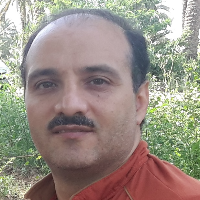The study of some physical properties and energy aspects of potatoes drying process by the infrared-vacuum method
Author(s):
Abstract:
Introduction
Potato (Solanumtuberosum L.) is one of the unique and most potential crops having high productivity, supplementing major food requirement in the world. Drying is generally carried out for two main reasons, one to reduce the water activity which eventually increases the shelf life of food and second to reduce the weight and bulk of food for cheaper transport and storage. The quality evaluation of the dried product was carried out on the basis of response variables such as rehydration ratio, shrinkage percentage, color and the overall acceptability. Drying is the most energy intensive process in food industry. Therefore, new drying techniques and dryers must be designed and studied to minimize the energy cost in drying process. Considering the fact that the highest energy consumption in agriculture is associated with drying operations, different drying methods can be evaluated to determine and compare the energy requirements for drying a particular product. Thermal drying operations are found in almost all industrial sectors and are known, according to various estimates, to consume 10-25% of the national industrial energy in the developed world. Infrared radiation drying has the unique characteristics of energy transfer mechanism. Kantrong et al. (2012) were studied the drying characteristics and quality of shiitake mushroom undergoing microwave-vacuum combined with infrared drying. Motevali et al. (2011) were evaluated energy consumption for drying of mushroom slices using various drying methods including hot air, microwave, vacuum, infrared, microwave-vacuum and hot air-infrared. The objectives of this research were to experimental study of drying kinetics considering quality characteristics including the rehydration and color distribution of potato slices in a vacuum- infrared dryer and also assessment of specific energy consumption and thermal utilization efficiency of potato slices during drying process.Materials And Methods
A laboratory scale vacuum-infrared dryer, developed at the Agricultural Machinery and Mechanization Engineering Laboratory of Shahid Chamran University of Ahvaz has been used. The dryer consists of a stainless steel drying chamber; a laboratory type piston vacuum pump, which was used to maintain vacuum in the drying chamber; an infrared lamp with power of 250 W which was used to supply thermal radiation to a drying product; and a control system for the infrared radiator.Sample Preparation
Fresh potatoes were purchased from a local market in Hamadan province. Potatoes were peeled, washed, and cut into sliced with thickness of 1, 2 and 3 mm by a manual slicer. Drying experiments of potato slices were performed in a vacuum chamber with absolute pressure levels of 20, 80, 140 and 760 mmHg; and radiation intensity of infrared lamp was 0.2, 0.3 and 0.4 W cm-2. The mass change of the sample during drying was detected continuously using an electronic weight scale (Lutron, GM- 1500P, Taiwan) with the accuracy of ±0.05 g.
Evaluation of rehydration capacity of dried potato slices
The rehydration tests measured the gain in weight of dehydrated samples (~5 g), dehydrated samples were rehydrated in 200 cc of distilled water at 100°C for 3 minutes.
Evaluation of color
The color of potatoes was measured on five slices selected randomly, and was described by three coordinates in the RGB color space using computer vision.
Evaluation of specific energy consumption
Energy consumption of dying process came from the electrical energy consumed by the operation of the vacuum pump and the infrared lamp. Specific energy consumption was defined as the energy required for removing a unit mass of water in drying the potato slice.
Evaluation of thermal utilization efficiency
Thermal utilization efficiency is defined as the latent heat of vaporization of moisture of sample to the amount of energy required to evaporate moisture from free water. The latent heat of vaporization of water at the evaporating temperature of 100°C was taken as 2257 kJkg-1.
Results And Discussion
The results of the evaluation of rehydration capacity of potato slices during drying process are shown in Table 1. Statistical analysis (ANOVA, post-hoc Duncan) showed that thickness at probability level of 1% had statistically significant influence on rehydration capacity values of dried potato slices. Moisture of dried slice of potato compared to its fresh was obtained nearly 80% in boiling water (at temperature 100°C) for 3 min. The most color changes of slice after drying was related to green color. According to Table 2 and statistical analysis results showed that factor of thickness was not statistically significant on specific energy. The effect of absolute pressure (pConclusions
Dried potato slices at a thickness of 1 mm put in boiling water for three minutes; showed the most amount of water absorption ratio that it was able to absorb the value of 86% more than the initial moisture. The lowest rate of color change before and after the drying process is related to the thickness of the thinnest sliced potatoes. Comparison of energy consumption showed that the radiation intensity of 0.4 W cm-2, absolute pressure level of 80 mmHg and slice thickness of 1 mm had shorter drying time in experimental conditions.Keywords:
Language:
Persian
Published:
Journal of Agricultural Machinery, Volume:6 Issue: 2, 2016
Pages:
463 to 475
magiran.com/p1591592
دانلود و مطالعه متن این مقاله با یکی از روشهای زیر امکان پذیر است:
اشتراک شخصی
با عضویت و پرداخت آنلاین حق اشتراک یکساله به مبلغ 1,390,000ريال میتوانید 70 عنوان مطلب دانلود کنید!
اشتراک سازمانی
به کتابخانه دانشگاه یا محل کار خود پیشنهاد کنید تا اشتراک سازمانی این پایگاه را برای دسترسی نامحدود همه کاربران به متن مطالب تهیه نمایند!
توجه!
- حق عضویت دریافتی صرف حمایت از نشریات عضو و نگهداری، تکمیل و توسعه مگیران میشود.
- پرداخت حق اشتراک و دانلود مقالات اجازه بازنشر آن در سایر رسانههای چاپی و دیجیتال را به کاربر نمیدهد.
In order to view content subscription is required
Personal subscription
Subscribe magiran.com for 70 € euros via PayPal and download 70 articles during a year.
Organization subscription
Please contact us to subscribe your university or library for unlimited access!



